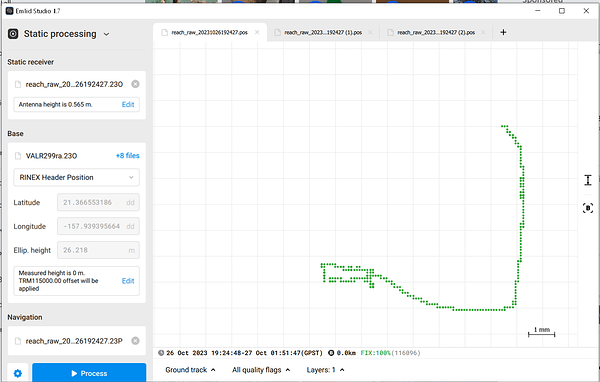First off, not a professional. I am using an RS+ as base and rover to survey my own property in NE Arizona. I have chosen NAD83 and NAVD88 for this particular project but I don’t think that matters too much. I am not really concerned about where I am at in the world, just that I am accurate to local benchmarks (property corners). I have setup 3 times to collect points. The first time I collected existing property corners and other features on the land which needed to be incorporated into my design constraints. The second and third time I was simply picking up changes (trench lines, new structures, etc.). Each time I set up I used the same base point (a property corner). The height of both base and rover has stayed consistent across the three surveys. In fact, right or wrong, I’ve just added the points in the initial survey in Emlid Flow so those project settings have remained consistent. Each time I survey, I pickup one existing point (property corner) from that first survey to give myself some confidence.
It appears I am not allowed to upload an attachment here or I’d attach the CSV file. Looking at the contents the Base Easting/Northing/Elevation are significantly different between the three surveys. See below. I would not expect that big of a difference.
Base easting,Base northing,Base elevation
1029860.225,1029446.091,7956.382
1029870.678,1029463.914,7974.378
1029856.231,1029462.454,8010.102
So, two questions. First, how can I prevent this (what did I do wrong?). Second, is there anyway to correct the data I have? The property is 10 hours away . I suppose I didn’t do my self any favors by only checking one point. If I had checked a few more I think I could shift and rotate this data into place.





